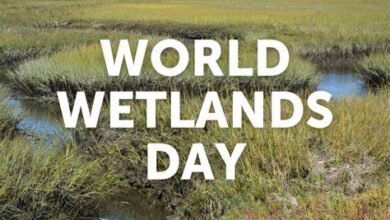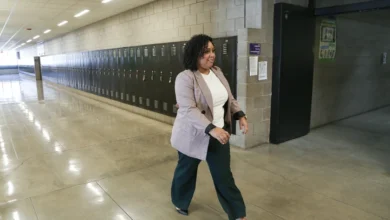When Childhood is Stolen: The Tragic Reality of a Child Forced to Labour in a Mine to Build a Home

Story
Recently, a story emerged from Akun Ejiba, Agidi Development Area in Nasarawa Eggon LGA of Nasarawa State, where a 13-year-old boy, through sheer determination and hard labour in a local mine, managed to build a house for his parents. On the surface, this story appears to be a tale of resilience and hard work, a child rising above his circumstances to provide for his family.
But beneath the surface lies a disturbing reality: “a child who should be in school is instead toiling in a hazardous mine,” taking on the burden of providing for a family that should be protecting and supporting him. This is not a success story. It is a tragic example of child labour, systemic failure, and the harsh economic realities that force children into roles meant for adults.
When a Child Becomes the Provider: The Failure of Protection Systems
A child’s primary responsibility should be to grow, learn, and develop in a safe and supportive environment. The responsibility to provide for a family lies with adults, supported by a functional system that ensures access to basic needs such as education, healthcare, and shelter. But in this case, a 13-year-old was forced into a dangerous mining job, a job that exposes him to toxic substances, physical injury, and possibly even death.
This is a clear failure of the protective structures that should have safeguarded him—his family, his community, the state, and the international community. These are the four rings of protection that should work together to ensure that no child is put in harm’s way.
1. The Family: The First Line of Protection
A child’s family is meant to be their first and strongest layer of protection. Parents are responsible for ensuring that their children’s basic needs—food, shelter, healthcare, and education are met. However, poverty and lack of opportunities often push parents to see their children as economic contributors rather than dependents in need of protection. In this case, the parents may not have had a choice. Poverty, unemployment, and a lack of government support may have left them with little option but to allow their child to work in the mines. Yet, this does not make it right. A child should never have to sacrifice their childhood to fill the gaps left by failing social systems.
2. The Community: A Silent Witness?
Communities are meant to be the second layer of protection, ensuring that children are safe and attending school. But in many places, child labour has become so normalized that stories like this are celebrated rather than condemned. Instead of asking, “Why is this child working in a dangerous mine?”, the community applauds his hard work, reinforcing the idea that child labour is an acceptable solution to poverty. This dangerous narrative must change.
3. The State: A System That Has Failed Its Children
Governments exist to provide social protection, ensuring that children are safe, educated, and not forced into labour. However, in many developing countries, weak child protection laws, corruption, and poor enforcement of labour laws leave children vulnerable.
Nigeria has laws against child labour, yet millions of children are working in hazardous conditions every day. In 2020, the International Labour Organization (ILO) reported that 43% of Nigerian children aged 5-17 are engaged in child labour, many in hazardous jobs like mining, agriculture, and street hawking.
This raises serious questions:
-
Where are the child protection agencies?
-
Why is this child not in school?
-
What social programs exist to support struggling families?
A government that fails to protect its children fails its present and future. Without urgent intervention, more children will be forced into labour, robbed of their education and childhood.
4. The International Community: A Global Responsibility
Child labour is not just a national issue; it is a global concern. The United Nations Convention on the Rights of the Child (UNCRC) and the International Labour Organization (ILO) have clear guidelines against child labour, particularly in hazardous sectors like mining.
The international community has a duty to:
-
Hold governments accountable for failing to protect children.
-
Support policies that provide financial aid to struggling families.
-
Fund education programs that give children real alternatives to child labour.
But are these efforts enough? If a 13-year-old is still working in a mine in 2024, the answer is clearly no.
The Hidden Cost of Child Labour
According to UNICEF, roughly 160 million children worldwide are engaged in child labour, with nearly half of them performing hazardous work that threatens their health and development. While stories like this young boy’s may appear to showcase resilience and determination, they also highlight a pressing issue: when children are pushed into work at such a young age, it often comes at the cost of their education, well-being, and future prospects.
Why Do Children Engage in Labour?
Child labour is often driven by:
-
Extreme Poverty – Families struggling to meet basic needs may see child labour as a necessity for survival.
-
Lack of Access to Education – Schooling may be too expensive or unavailable, leaving children with no alternative but to work.
-
Economic Uncertainty – Sudden illnesses, job losses, or conflicts can push children into premature labour.
-
Cultural Norms and Expectations – In some societies, children working from a young age is seen as preparation for adulthood.
Mining: One of the Most Dangerous Jobs in the World
While the young boy’s efforts are commendable, it is important to recognize that mining remains one of the most dangerous industries globally. Although miners make up only 1% of the global workforce, mining accounts for 8% of all workplace fatalities.
Some of the key dangers include:
1. Mine Cave-Ins
One of the most terrifying risks in mining is a cave-in. When underground support structures fail, entire tunnels can collapse, trapping miners under tons of rock and debris. Some of the worst mining disasters in history have resulted from such cave-ins.
2. Explosions from Toxic Gases
Mines often contain dangerous gases such as methane, hydrogen sulfide, and carbon monoxide. If these gases build up in enclosed spaces, they can explode or suffocate workers.
3. Poor Air Quality and Respiratory Diseases
Long-term exposure to fine mineral dust in mines can cause severe respiratory illnesses like pneumoconiosis (black lung disease) and silicosis. These conditions are irreversible and often fatal.
4. Extreme Temperatures
Mining takes place in some of the most extreme environments on earth, from freezing cold regions to places where underground temperatures can reach 60°C. Without proper protection, miners are at risk of heatstroke or hypothermia.
5. Child Exploitation in Mines
Reports from organizations like the International Labour Organization (ILO) confirm that thousands of children are engaged in mining across Africa, Asia, and South America. These children work in unsafe conditions, exposed to dangerous chemicals like mercury, and are often denied access to education.
Child Labour: A Violation of Rights
The United Nations Convention on the Rights of the Child (UNCRC) defines child labour as work that:
-
Deprives children of their childhood, potential, and dignity
-
Interferes with their schooling and development
-
Is harmful to their physical and mental well-being
While some work (such as light household chores) can be beneficial in teaching responsibility, hazardous jobs like mining rob children of their future.
The Statistics on Child Labour
-
70% of child labourers work in agriculture
-
17% work in the services sector
-
12% work in industry, including mining
-
10 million children are trapped in modern slavery
Education: The Best Weapon Against Child Labour
One of the strongest tools for ending child labour is education. When children have access to schools, they are less likely to be forced into dangerous work. However, many families cannot afford school fees, uniforms, or books, making education inaccessible.
What Must Be Done?
Instead of applauding children like this young boy, we must ask why he was put in this situation in the first place. We must demand action from the responsible parties.
For Parents:
Prioritize Education – Ensure your child is in school and not engaged in harmful labour.
Provide a Safe Environment – Protect your child from exploitation by being vigilant about their well-being.
Seek Support – If struggling financially, explore community programs, government aid, or NGOs that support families.
For the Government:
Enforce child protection laws strictly – No child should be working in hazardous conditions.
Provide free, quality education – Education should be the alternative to child labour.
Implement social safety nets – Financial support for struggling families.
For the Community:
Speak out against child labour – Do not celebrate it as a sign of resilience.
Encourage education – Support families to keep children in school.
Report cases of child labour – Raise awareness about children working in dangerous environments.
For the International Community:
Hold governments accountable – Demand stronger policies against child labour.
Invest in child-focused development programs – Prioritize funding for children’s education and welfare.
Ensure ethical supply chains – Companies must verify that their materials are not sourced through child labour.
Conclusion
This story is not a fairytale of a hardworking young boy achieving success. It is a tragedy, a child robbed of his right to education and safety. Instead of celebrating such stories, we must work toward a future where no child has to endure such hardship. A 13-year-old should be in a classroom, not a mine. He should be reading books, not carrying loads of minerals. He should be dreaming of his future, not fighting for survival. The rings of protection—family, community, government, and international organizations, have all failed him.




